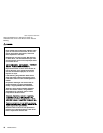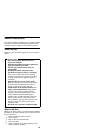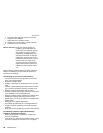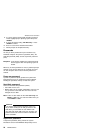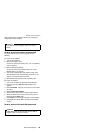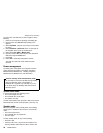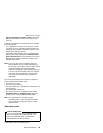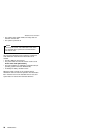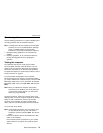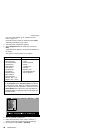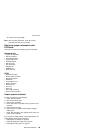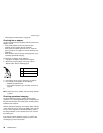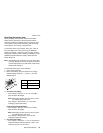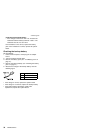
Will not suspend even if LCD is closed in the Power
Management Properties window. Then only the LCD
turns off.)
In certain circumstances, the computer goes into standby
mode automatically:
v If a “suspend time” has been set on the timer, and the
user does not do any operation with the keyboard, the
TrackPoint, the hard disk, the parallel connector, or the
diskette drive within the time set.
v If the battery indicator blinks orange, indicating that the
battery power is low. (Alternatively, if Hibernate when
battery becomes low has been selected in the “Power
Management Properties” window, the computer goes
into hibernation mode.)
Note: Even if you don’t set the low-battery alarm, the
charge indicator lets you know that the battery is
low, and then the computer enters the power-saving
mode automatically. This default low-battery
behavior is independent of the operating system; so
if you have set the low-battery alarm, the computer
may not do what you specified. It chooses either
your setting or the default setting, whichever is
appropriate.
Any one of the following events causes the computer to
resume operation from standby mode:
v The Fn key is pressed.
v The LCD cover is opened.
v The ring indicator (RI) is signaled by a serial device or a
PC Card device.
v The power switch is turned on.
v The resume timer is set. In Windows which has the
Scheduled Tasks, the Scheduled Tasks setting has
priority over the setting in IBM BIOS Setup Utility.
Note: The computer does not accept any input
immediately after it enters suspend mode. Wait a
few seconds before taking any action to reenter
operation mode.
Hibernation mode:
Note for Windows NT
If you are using Windows NT in the default format,
NTFS, you cannot create a hibernation file. If you
want to use hibernation mode, you will need to
reinstall Windows NT with FAT format.
In hibernation mode, the following occurs:
Related service information
General descriptions 25




